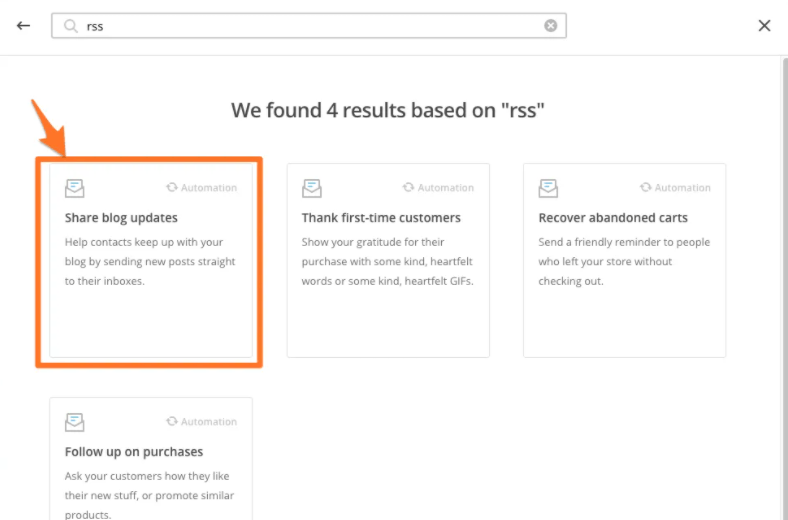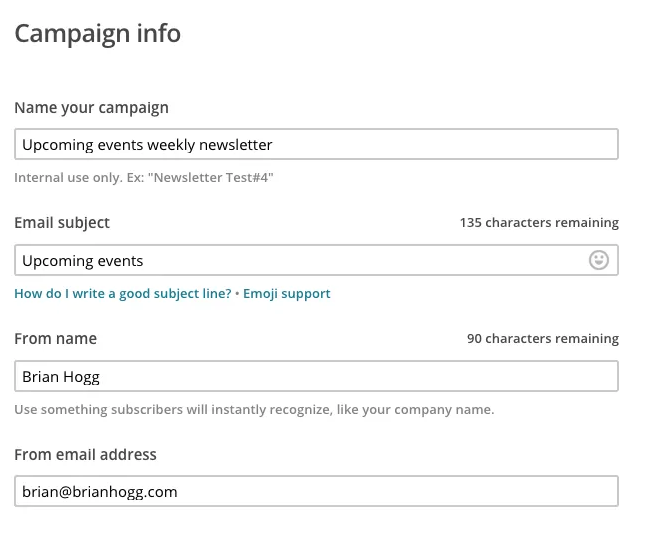Do you or your clients ever run events? Whether you’re offering anything from wine tasting or pottery tutorials to webinars and other virtual events, keeping users up-to-date with what’s going on is a vital part of sustaining a customer base.
Unless your site is really active, however, most users won’t commonly visit small business websites on the off chance they might see something they like; you’ll need to actively work to coax them back. Creating events on social media is one option, but it’s time-consuming to do it all manually, still relies on your customers checking in regularly, and will often require work on a whole bunch of different platforms.
Fortunately, keeping them informed is easy with a plugin I originally custom created for softwarehamilton.com, Event Calendar Newsletter. It automates the process of creating event newsletters, meaning you’ll never have to worry about forgetting to alert your subscribers about upcoming events again. In this guide, I’ll show you how to use it!
Set Up a Mailing List
In order to start sending people email newsletters, you will, of course, need a mailing list! So the first step is to start creating gathering subscribers in Mailchimp, MailPoet, Active Campaign, or one of the other supported newsletter solutions. Ask people to sign up on your website, have attendees at the events leave their business cards or sign a guestbook, and keep them informed of upcoming events. If running an event virtually either have them sign up by email in advance or promote your website during the event itself.
Don’t let the choice of email marketing software stop you from starting to collect email addresses. If you haven’t decided yet, just use Excel, Google Sheets, or even a piece of paper and start getting them recorded!
Set Up an Event Calendar on your WordPress site
If you don’t already have an events calendar on your website for visitors to check out your upcoming events, you’ll also need to do that first. You have a few different options to choose from, as Event Calendar Newsletter supports The Events Calendar (by Modern Tribe), All-in-one Event Calendar (by Time.ly), Events Manager, and over ten more popular calendar plugins.
Just add the plugin to your site by going to the Plugins menu in your admin area, then choose Add New. Search for the plugin you like and click Install, then start adding events!
Not every events calendar plugin is created equal, and you’ll want to take a look at the pricing along with the features and addons on offer before deciding to see which one you like best.
Scroll down to the section on Choices for an Event Calendar and get that set up. Remember, you only need to add one of the plugins to get started.
Set up the Event Calendar Newsletter Plugin
Now we’ve got our groundwork done, we can start bringing everything together. First you’ll need to register for an account at the Event Calendar Newsletter site, from where you’ll be able to download the plugin. Then in your WordPress Dashboard, simply go to Plugins, then Add New, and upload the zip file. After the plugin is installed you’ll be able to use your license key to activate the plugin.
Once installed and activated, click the Event Calendar Newsletter item in the menu. You’ll be presented with a number of options to select the events you want.
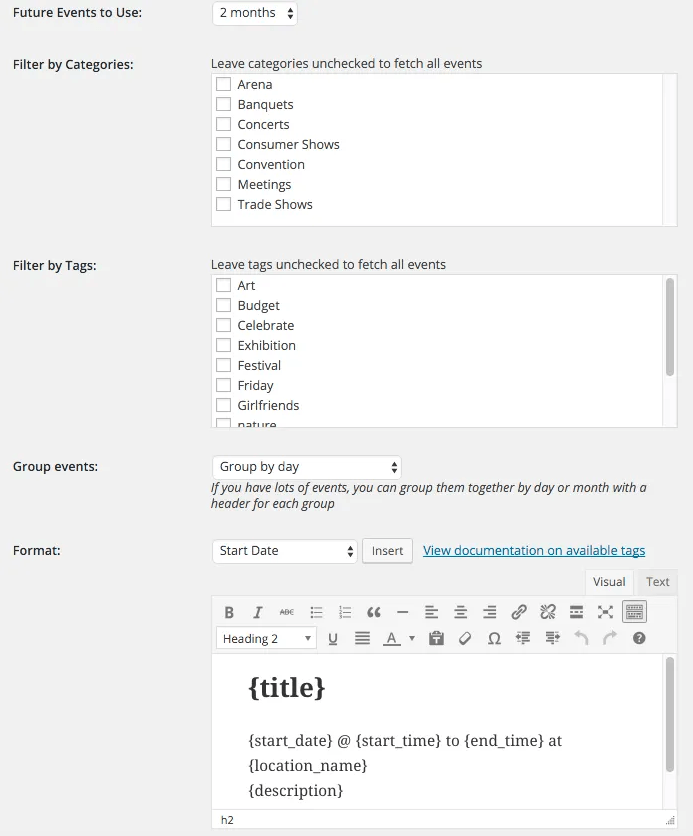
Events Calendar Newsletter Pro makes newsletter design a piece of cake, as you can tailor each of the options to generate the right newsletter for you.
Future Events to Use
You can choose how far in the future you want to include events, from one week to a year.
Filter by Categories, Tags, or Calendars
Depending on what event calendar plugin you are using, you’ll have options to filter the events you’re including, or just leave them all unchecked to include all events.
Group Events by Day or Month
This option allows you to create a header for each day or each month of your events, making them easier to skim through if your email details a lot of upcoming events. You can customize the format of this header in the settings (Event Calendar Newsletter > Settings).
Display Format of Events
You can fully customize how your events will look in the newsletter and what event details are. Using the dropdown (or by typing them yourself), you can use tags like {event_image} for the featured image of your events, and {excerpt} for the short description to get your newsletter looking exactly how you want it.
You can use the visual editor, or if you prefer you can switch to the text tab to customize the HTML directly. If you are a developer, there are also a number of filters you can use to customize the output formatting.
Saving as a Template
You can save the options as a template to quickly regenerate the output of your events to copy and paste for your next newsletter or to automatically include it inside your newsletters.
Now just click Generate Newsletter Formatted Events to create the newsletter-friendly format of your events calendar.
Integrating The Events Calendar Newsletter with your mailing list software
As I’ve mentioned, The Events Calendar Newsletter integrates with over ten of the most popular WordPress event calendar plugins. For the purposes of demonstration, I’ll look at how it integrates with Mailchimp here as it has the greatest amount of scheduling options, but other platforms such as MailPoet, ActiveCampaign will let you autoamtically add events to newsletters as well.
Once you’ve created an Events Calendar Newsletter template as above, you can go to Event Calendar Newsletter and then Saved Templates, where you’ll find the template you just made. You’ll then need to copy the Feed URL.
In Mailchimp, create a new list, and then specify a list name, the email address and name emails will come from, and how you’d like to be notified when people sign up to your list. Then click Save to create the list. Add subscribers in the usual way.
Next, you’ll want to create your campaign by clicking Campaigns at the top, searching for rss and selecting the Share Blog Updates option. For the purpose of this demo, let’s assume that we want to send out a weekly newsletter of events for the next two weeks.
After selecting a name for your campaign (which only you can see), paste the Feed URL of your saved event newsletter template in the RSS feed URL box.
Select «Every Week» for the day and the time you’d like to send the mailing. You’ll also want to check Resize RSS feed images to fit template and then click Next in the bottom-right corner of the browser.
On the next screen, confirm the List to send to and click Next.
You can now confirm your campaign name, and you can change the subject line to something like «Upcoming Events»:
Now you know that all the necessary info will be pulled from your event calendar plugin as part of the Mailchimp automation, you can focus on designing your newsletter.
While Mailchimp does by default suggest a range of email newsletter templates, it can be easiest just to select the Simple Text template so you don’t have to remove a bunch of default content. Feel free to look at newsletter examples across the web for some inspiration!
You can put anything you might ordinarily want to put in your newsletters (some kind of call-to-action is particularly important to drive traffic to your site). The heavy lifting of the automation is done by simply adding a new text block with the content:
*|RSSITEMS:|**|RSSITEM:CONTENT_FULL|**|END:RSSITEMS|*
Preview your design and you’ll see that, as if by magic, all your events for the next two weeks are there waiting for your in your email newsletter. Now click Next, confirm everything looks good and there are no errors, then click Start RSS. Your campaign will start sending automatically every week.
Choices for an Event Calendar
The Events Calendar
A very popular plugin by Modern Tribe for adding events right on your site by adding events like you would a new post or a page. You can specify the start and end times:
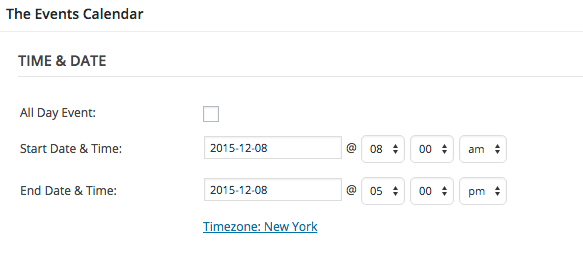
And the location with the option of displaying a Google Map:
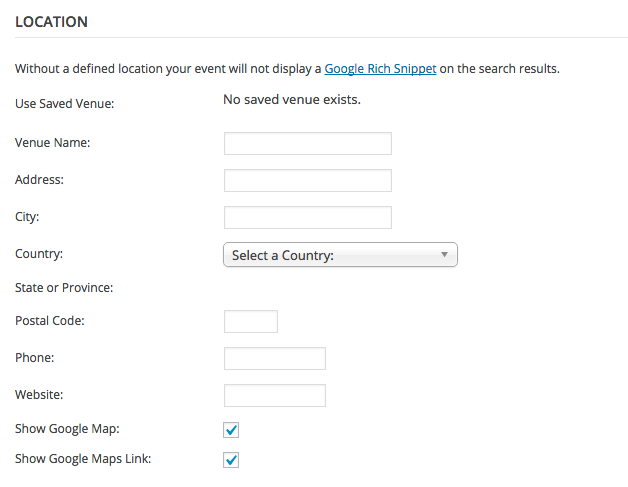
You can add all your upcoming events by going to the Events menu and clicking Add New.
Then, you can add the calendar to your site’s navigation menu by going to Appearance then Menus. Click Events on the left-hand side then check Events, then «View All» and then the Add to Menu button.
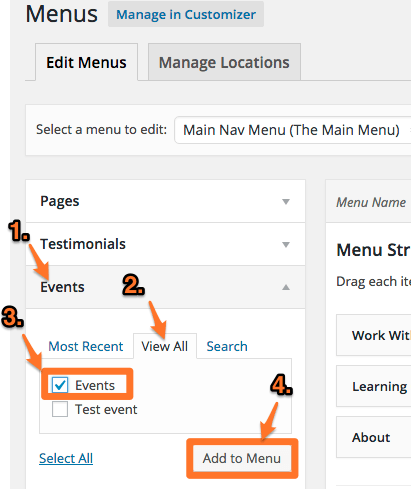
Voila, the events calendar is on your site! Now when you have new events, all you need to do is add a new event and it will appear in the calendar.
Simple Calendar (aka Google Calendar Events)
The Simple Calendar plugin uses a public Google Calendar to get your events. So adding events is as simple as updating your Google Calendar using the desktop interface, your phone, or whatever other software you’d like to manage that calendar.
First, you’ll want to create a google calendar. You can link that calendar up with the Calendar app in OSX, Outlook, or just use the Google Calendar web interface to add your new events.
Then, install the Simple Calendar plugin and follow their instructions for creating a Google API key to fetch your events.
You can then go to Calendars and Add New.
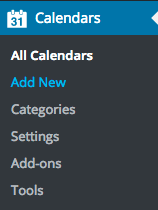
Add a title, then scroll down to the Calendar Settings area and click the Google Calendar tab. Follow the instructions for making your calendar public and adding your Calendar ID. Then publish that calendar.
Finally, copy the shortcode they provide – which is something like the below – into a new Page on your site.
[calendar id="111"]
Your calendar is now ready to go – events you add to your Google Calendar will appear on your site automatically!
Event Calendar
Not to be confused with «The Events Calendar» mentioned above, this used to be called «Ajax Events Calendar.» While my Events Calendar Newsletter plugin for creating a newsletter from events currently supports this plugin, I don’t recommend it because it doesn’t work well on mobile and it also will not work at all without JavaScript enabled (which a lot of people disable due to issues with vertigo).
Start Creating Event Calendar Newsletters Today!
Hopefully by now you’ve seen that setting up email marketing campaigns to send your subscribers information about your upcoming events doesn’t have to be a headache. If you’re still not certain the plugin is for you, you can always try the free version from the WordPress Plugin directory. But with the Event Calendar Newsletter Pro, you can create engaging newsletters accurately and quickly, whichever WordPress event calendar you use. Why not give it a go?


